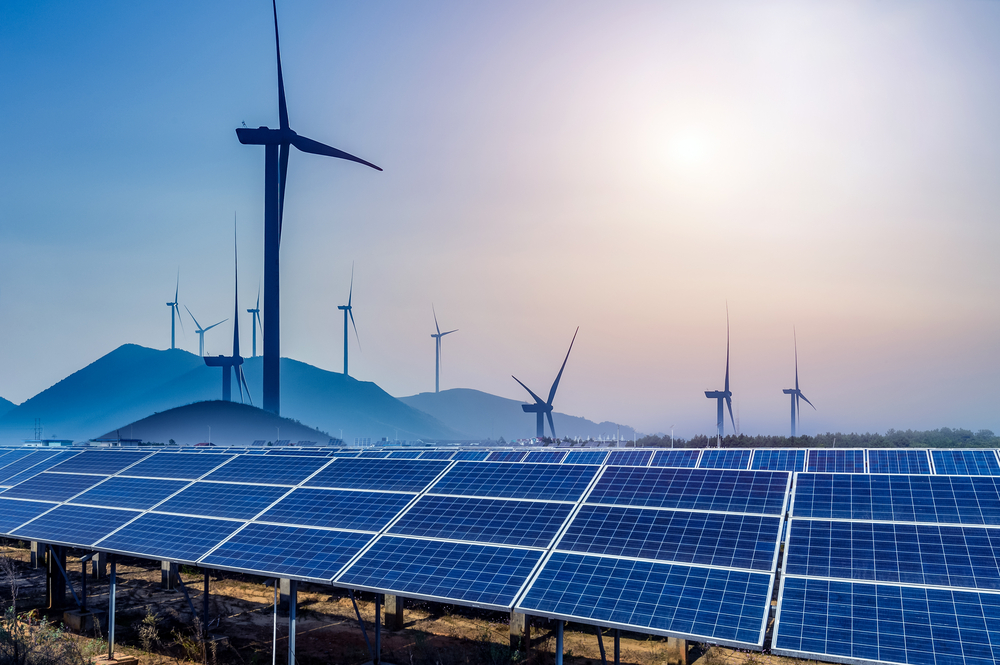During the 2000s, as global fossil fuel costs skyrocketed, Uruguay faced a tremendous issue. Uruguay, as a country heavily reliant on foreign oil, found itself in an energy crisis. With a population of 3.4 million, the surge in energy demand surged by 8.4 percent in the preceding year. As a result, household energy expenses skyrocketed, putting a strain on individuals’ wallets and increasing anger among the populace.
President Tabaré Vázquez has been dealing with rising energy costs and financial strains on people. Despite a mutual aid agreement with neighboring countries such as Argentina and Paraguay in the event of an energy emergency, Uruguay was forced to purchase electricity at exorbitant prices. This dependency on external sources intensified the economic burden, forcing Vázquez to seek fast remedies to the catastrophic energy problem.
The unexpected solution came from physicist Ramón Méndez Galain, spearheading a radical shift towards clean energy.
Uruguay’s amazing energy transition
Today, Uruguay is a witness to a nearly complete transition away from fossil fuels in power production. Depending on weather conditions, the country generates between 90 and 95 percent of its power from renewable sources, sometimes even reaching 98 percent. Uruguay’s transformation presents it as a potential model for countries attempting to reduce their reliance on fossil fuels.
A bold diversion from nuclear power
“I had been working abroad for 14 years, and when I came back, there was this energy crisis, but the only solution people were giving was to install a nuclear power plant – that was it,” Galain recalls. “I was a nuclear physicist, so I thought I could understand a little about this problem.”
As Galain looked deeper into nuclear power as a potential solution to Uruguay’s energy crisis, he became less convinced. Instead, he argued for renewables. In a paper he published about the topic, Galain explained why Uruguay should invest in wind power. Because of his conviction, Galain was appointed as Uruguay’s energy secretary, tasked with carrying out this ambitious plan.
Uruguay’s economic environment and energy demands
Despite its small size, Uruguay enjoys economic success, with one of the highest GDP per capita rates in South America. This economic expansion fueled a spike in demand for contemporary conveniences, exacerbating the need for power. During his tenure, Galain oversaw the construction of over 50 wind farms as well as the expansion of hydropower to fulfill this rising need.
Changing people’s attitudes toward renewable energy
Galain overcame the problem of changing the narrative in the face of misconceptions about renewable energy. “No one believed we could do it. We needed new solutions. We needed to do things differently,” he emphasizes. Overcoming mistrust required exposing myths about cost, inconsistency, and job loss, which was critical for gaining widespread public support.
Accepting a ‘just transition’
The concept of a ‘just transition‘ became essential in order to ensure that no one was left behind. Contrary to what people expected, rather than job losses, nearly 50,000 new work opportunities arose. Retraining programs aided in adapting to the changing energy landscape, exemplifying the country’s dedication to an inclusive transformation.
Success stories from the renewable wave
The story of Santiago Revello shows the transforming potential of Uruguay’s renewable projects. When Revello was considering selling his beef farm, he met Fernando Schaich, a wind farm developer. Their collaboration culminated in the installation of 22 wind turbines on Revello’s farm, providing a lucrative cash stream while not interfering with existing agricultural operations.
Uruguay’s current challenges in the green transition
However, Uruguay’s march to green energy has not been without challenges. Gonzalo Casaravilla, previous president of UTE, the public energy firm, mentioned logistical issues, particularly outside of urban areas. The delivery of wind turbine components over Uruguay’s narrower roadways was a daunting obstacle that required cautious planning and execution. Rolling roadblocks and convoys became the norm, reducing interruption during the building of new wind farms.
“At the outset, the technical teams were cautious. But later, they acknowledged it as a commendable strategy,” Casaravilla recalls. The initial tension eventually gave way to a cohesive and effective team, demonstrating the adaptability and durability of the transition process.
Navigating public perceptions and realities
Despite its triumphs, Uruguay’s transformation experienced some pushback. Some individuals questioned why their energy bills have not decreased significantly despite the transition to renewable sources. Ramón Méndez Galain, undeterred by the objections, dismissed the narrative, emphasizing the broader positive influence. “We had 40 percent poverty; now it’s 10 percent, and extreme poverty has almost disappeared. People have access to amenities like air conditioning, increasing electricity consumption,” Galain explains.
Xavier Costantini of McKinsey, located in Montevideo, debunks the myth that renewable energy is free. While maintenance expenditures are relatively low, the initial investment must be repaid. Uruguay’s advantages, such as plentiful wind and hydropower, combined with political stability and strategic tax policies, aided its transition. However, Costantini claims that similar conditions exist elsewhere, citing Scotland’s hydropower potential in the UK.
Lessons for the global transition
Uruguay’s success story, while not a universal model, might provide useful lessons for other countries pursuing a renewable transition. Uruguay hopes to create a new pattern as it moves forward with its transformation, transitioning public transportation to electric vehicles. If successful, this project could serve as a model for other countries, demonstrating a practical strategy to decarbonizing economies.
Uruguay’s continual efforts provide insight into the changing landscape of sustainable practices. As China expands into new territories as part of its green transition, the rest of the world watches in expectation, looking for inspiration and advice for their own sustainable energy transformations.












